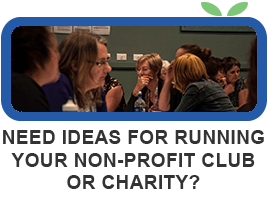Last updated October 12, 2018
When it comes to governing a non-profit organisation there are several models that Boards can use, depending on the organisation’s size and stage of development. Truth be told, many Non-Profit Boards govern with a mixture of models, and their style evolves as the organisation develops. Which model does your Board use?
The ‘Police Man’ Model
When the Board operates using a Police Man model, their main focus is on monitoring and evaluation. Most, if not all, tasks are initiated by the CEO and then information about progress / options are reported to the Board. The Board then acts as a Police Man, approving or disallowing activities based on the rules and overall direction of the organisation.
The Police Man model can be risky for trustees if they accept information at face-value and do not undertake proper due diligence. Ultimately it is the Board collectively (and trustees individually) who are responsible for the actions approved.
The Police Man model is particularly stressful for the non-profit CEO, who is often under-resourced and has various responsibilities competing for their time. Non-Profit Boards that operate in the Police Man model often experience CEO burnout on a repeat cycle.
The ‘Partnership’ Model
When the Board operates using a Partnership model they initiate ‘big picture’ processes and activities, but delegate part of these tasks to the CEO. They are much more hands-on than a ‘Police Man’ Board, in that they share responsibility for informing strategic activities. They still, however, leave the day-to-day operations to the CEO.
The Partnership model is the most effective model for small-medium sized non-profits, however there needs to be clear guidelines and communication to ensure that trustees stay focussed on the ‘big picture’ and don’t accidentally turn into Managers. The Partnership model means that both the Board and the CEO are active in researching, preparing and informing the big decisions.
The ‘Pilot’ Model
When the Board is using a Pilot model, they are much more active in driving (flying!) the day-to-day running of the organisation. This is sometimes necessary in very small organisations with no paid staff; however trustees need to be aware of what decisions they can make alone, and what decisions need to be made as a Board. Boards that operate in a Pilot model need to ensure they have a strong Chair and that there is excellent communication between all trustees.
Which model does your Board use?
If you think this article would be useful for your members, you are welcome to use it on your website or in your newsletter. We just ask that you let us know where it is being used, and that you acknowledge our website at the bottom of the article. If you are using the article online, please include a link to our homepage.




